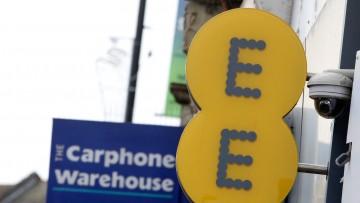The advent of mobile advertising has been something of a recurring dream over the last decade with each year that passes promising to be the one when the trend goes mainstream.
That may trigger a “heard it all before” attitude, yet there is growing evidence that mobile has not only started to make its mark, but is ready to fulfil its potential as the dominant medium for advertisers.
The global mobile advertising market is set to surpass $100 billion in spending next year when it will account for more than half of all advertising expenditure. These figures, compiled by eMarketer, suggest that spending will almost double by 2019 and account for 70 per cent of the overall budget.
Brands now have a plethora of options from video on demand to banners, rich-media formats and really immersive experiences

The rise of advertising-based apps such as Facebook has finally propelled mobile into the marketing limelight
The rise of the smartphone and tablet alongside advertising-based apps such as Facebook have finally propelled mobile into the limelight and it is growing fast. In 2014, the Internet Advertising Bureau said that 23 per cent of all digital spending in the UK was targeted at the smallest screen in the house compared to only 16 per cent reported for 2013.
This brings with it the functionality of a smartphone compared with more static formats such as billboards and desktops. Mobiles are personal, location specific and contain a huge amount of personal information that can be of tremendous use to an advertiser.
Utilising mobile functionality
Neil Bruce, head of mobile for Mindshare, says: “Brands now have a plethora of options from video on demand to banners, rich-media formats and really immersive experiences. Touch screens mean you can adapt sliding functions to ads, use accelerometers and haptic engines. And, of course, there is still standard display, those infuriating ads that you hit by accident and they take you to the app store. There is a lot for brands to navigate.”
Mr Bruce says mobile can breathe life into more traditional marketing activity, highlighting Jaguar’s sponsorship of Wimbledon. “They needed to amplify what they did there,” he says. Unable to use the actual tennis content, which is controlled by broadcasters, Mindshare instead equipped the spectators with wristbands that collated biometric data including excitement levels and the volume of the applause. This was turned into a data stream that was then collated and piped to tennis fans. “That increased Jaguar’s association with the event and put it at the forefront of leading technology,” he argues.

Robert Franks, managing director of digital commerce at O2, says spending on mobile advertising is rising, but that it does not yet reflect the amount of time people are glued to their phones, with on average 2 hours and 26 minutes spent every day looking at the screen. O2 is one of the only UK mobile networks that is still trying to crack the mobile advertising market after it bought Weve, a cross-industry body, earlier this year, with Vodafone and EE having thrown in the towel.
Mr Franks argues that the market is slowly catching up to the mobile opportunity. “Big brands and agencies absolutely get it. Virtually 100 per cent of major brands’ websites are optimised for mobile. But you still need content that is engaging to consumers. We are using gyroscopes and accelerometers in the phone to achieve that.”
Engaging customers
He points to a campaign for BMW that showed the interior of a new model in 3D and let the user rotate their phone to explore it as if they were looking around. That triggered substantial follow-up and generated traffic to dealerships. Location is also critical with a campaign for Nectar helping to show shoppers not only how many points they have, but where they can spend them.
Noam Neumann, head of mobile strategy at UK-listed mobile technology company Matomy Media, says: “It is known that every campaign has its specific goals to achieve, but there is something which is common to all of them – brand awareness and engaging users are the foundations of every campaign, and the new mobile world offers just that. Rich-media and video campaigns using smart-buying DSPs [demand-side platforms] that are buying a set demographic at certain times and places can create top user engagement. Today there is no limit to what you can achieve with your campaign.”
The issue for many small businesses is cost as not everyone has the resources of Jaguar or BMW. Mr Neumann says that interstitial ads, which appear while a website is downloaded, or old-fashioned banner ads can be more cost-effective ways to target a new generation of media users.
Ad blocking is a call to arms for the industry to raise the bar – we have to raise the quality of what is being delivered
Mindshare’s Mr Bruce agrees that choosing a layered approach can pay dividends. “Those on a limited budget need to develop a content strategy. Don’t just carpet bomb consumers with static ads. Don’t pour your entire budget just talking to customers over social networks,” he says.
For O2’s Mr Franks it is a case of doing your homework with so many small agencies now offering mobile advertising services. “There are lots of smaller companies between the agencies and the publishers, and some do an amazing job. Others talk a good game, but don’t deliver. That makes people more cautious,” he says.
Ad-blocking
The biggest debate to hit the burgeoning mobile advertising market is playing out right now as the sudden advent of ad-blocking technologies has cast a pall over the sector. Apps like Facebook and Twitter are rife with ads that consumers have until now accepted as a trade-off for free access to those services, yet the aggressive tone of the ad-blocking developers has caught the industry off guard.
Networks which once targeted mobile advertising themselves now warn that customers are annoyed at the slew of irritating ads, which populate their phone, with some estimates suggesting that between 10 and 50 per cent of a consumer’s data allowance is eaten up by ads they have no interest in. Both EE and O2 have publicly expressed interest in ad-blocking technology at the network level.

Both EE and O2 have publicly expressed interest in ad-blocking technology at the network level
“Ad blocking is a call to arms for the industry to raise the bar – we have to raise the quality of what is being delivered. There has to be a value exchange,” says Mr Franks on O2’s decision to explore the technology.
This is echoed by Mr Bruce. “The potential growth in ad blocking could be a blessing in disguise. Mobile advertising has got lazy and greedy. The very worst of the desktop market has been adopted – static and non-engaging,” he claims.
There seems to be recognition within the industry that advertisers and companies have to find a way to make mobile advertising less intrusive and more relevant. With a smartphone in their pocket, an advertiser – with permission – can not only tell where a customer is, but where they have been and where they are likely to go. Building an advanced profile can break down the barrier between intrusion and providing value.
“It’s got to be more than just sending a text when someone walks past a Starbucks. It’s about understanding consumer behaviour and delivering something that is relevant to them,” Mr Franks concludes.

Utilising mobile functionality

